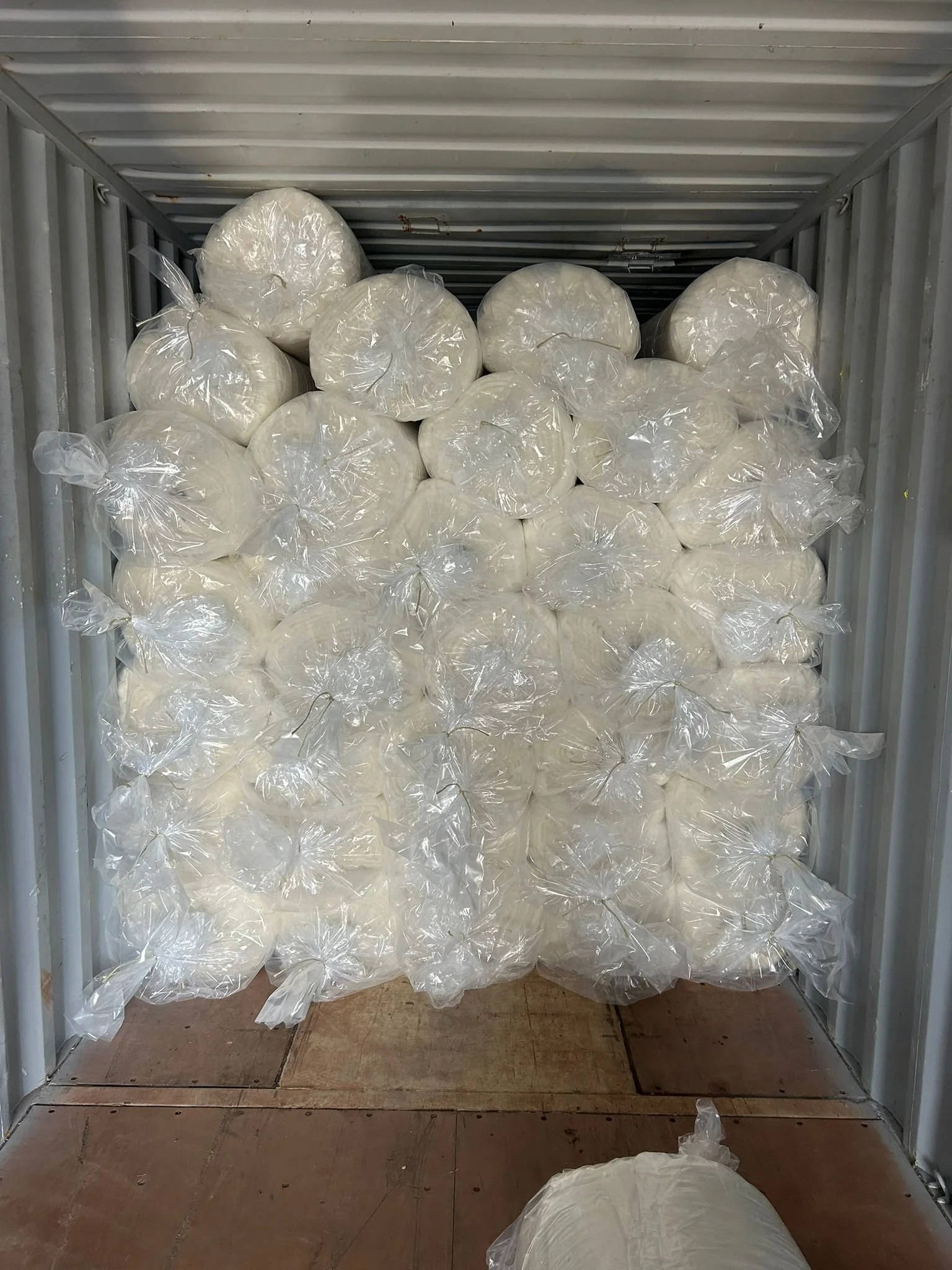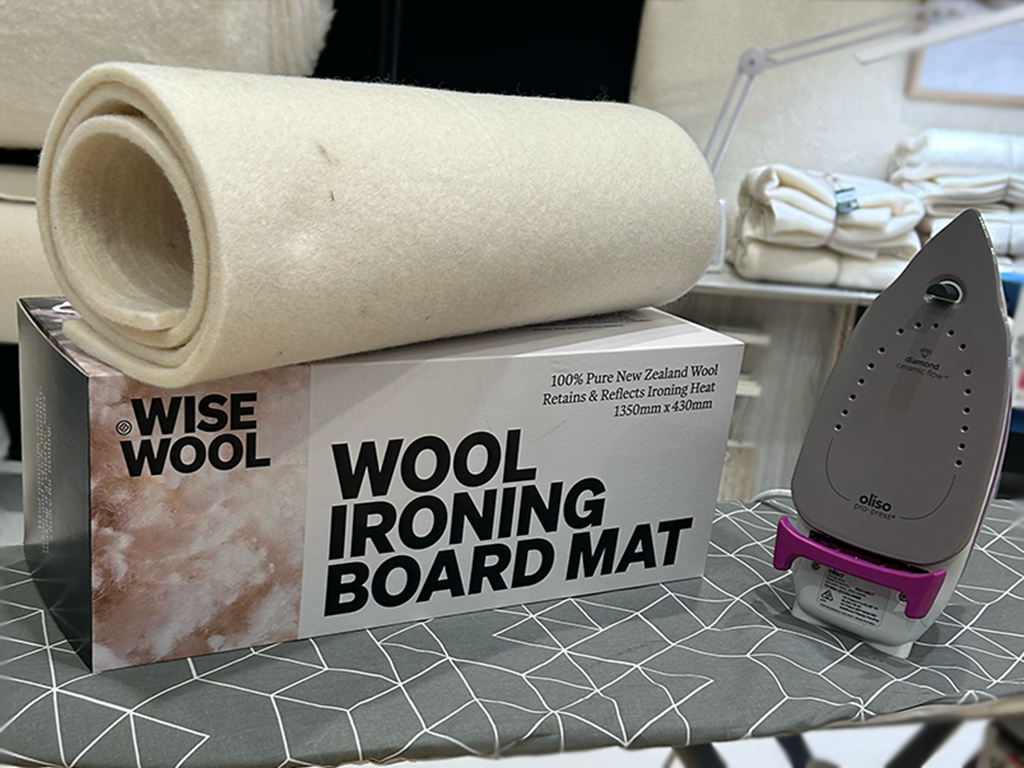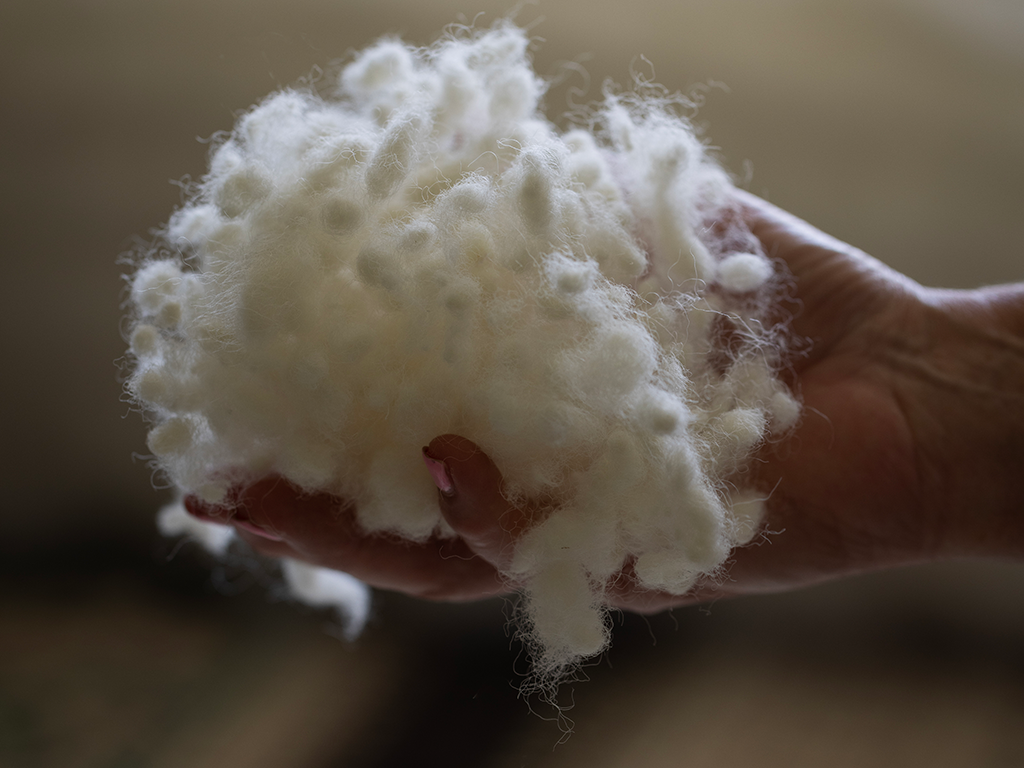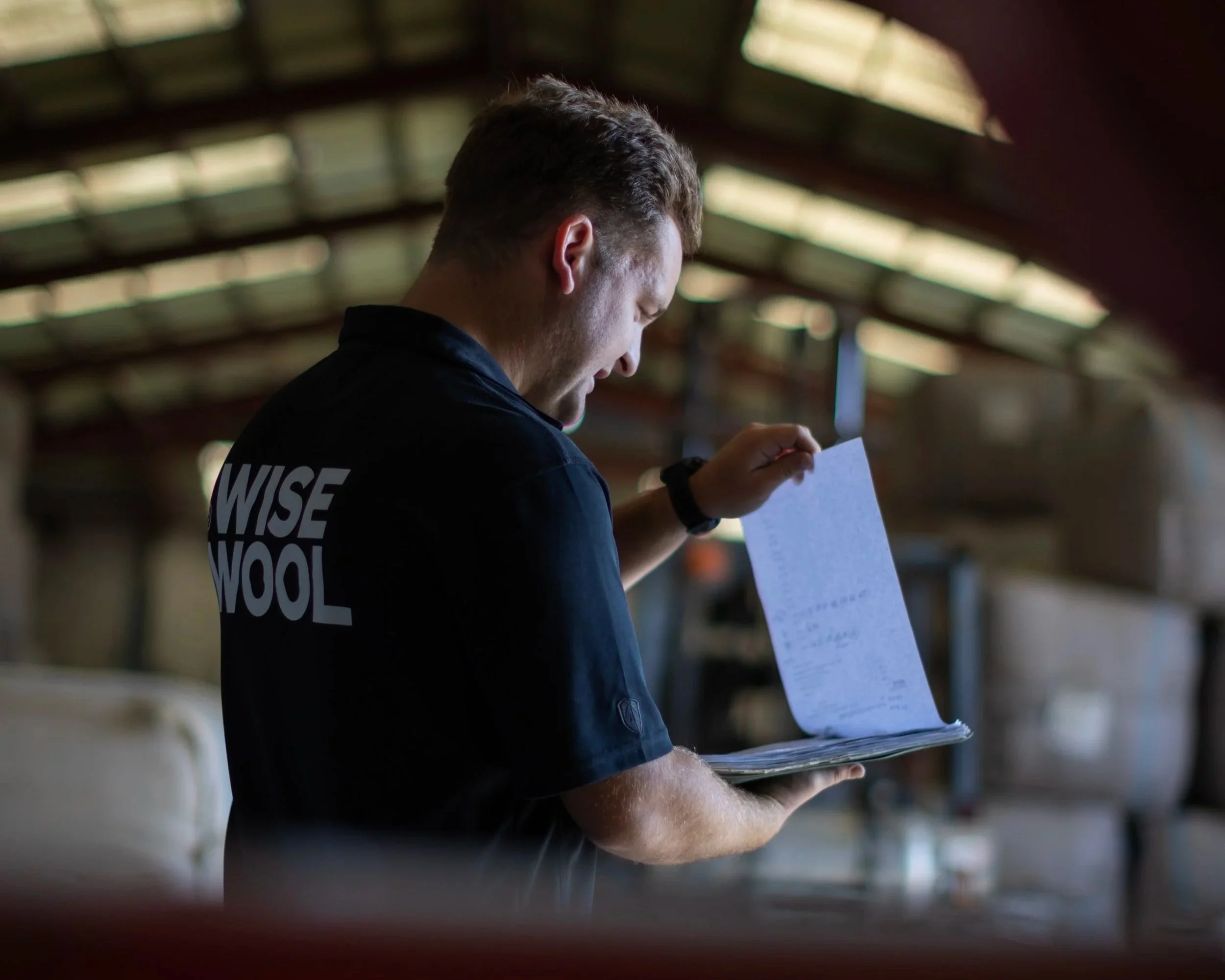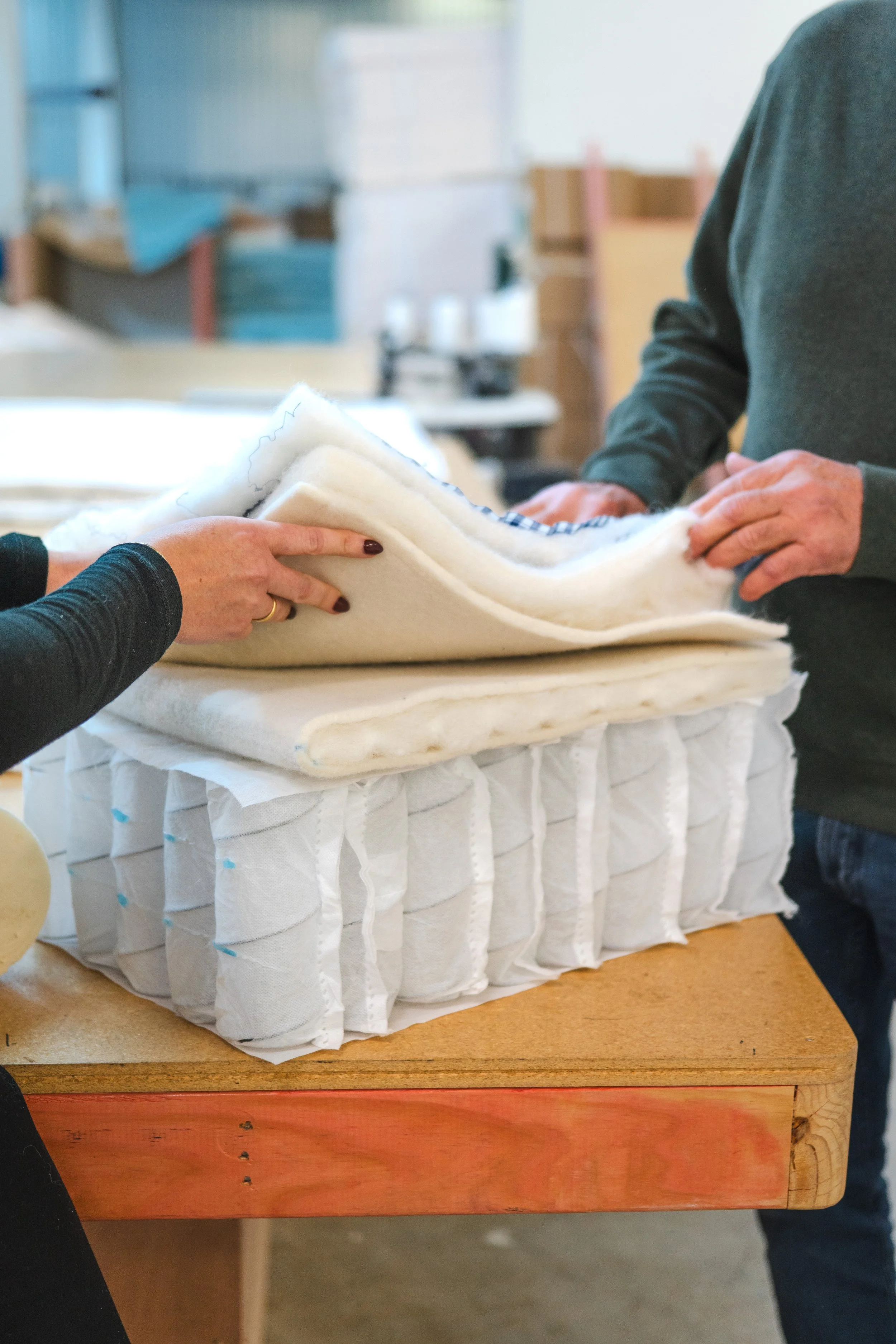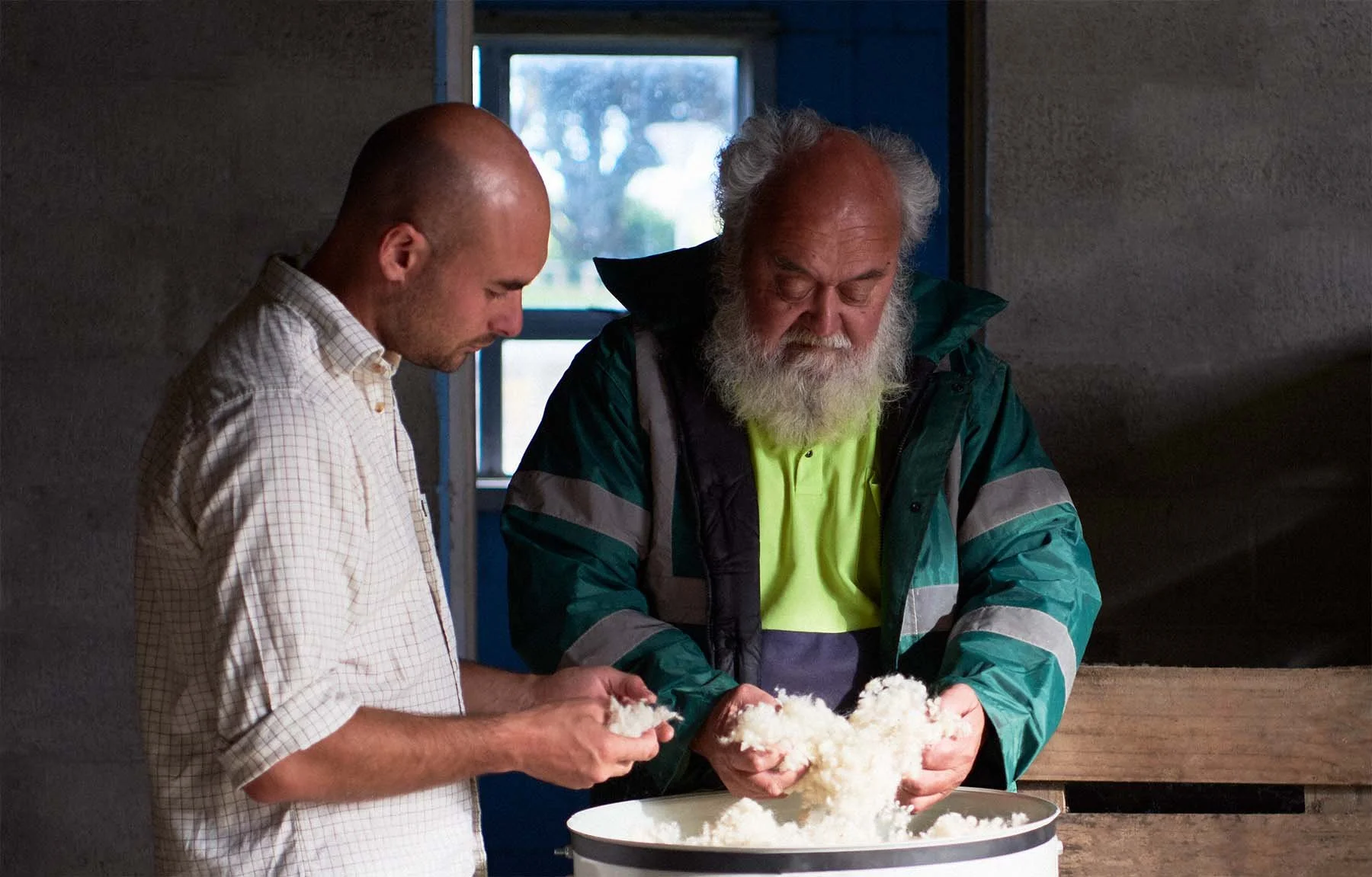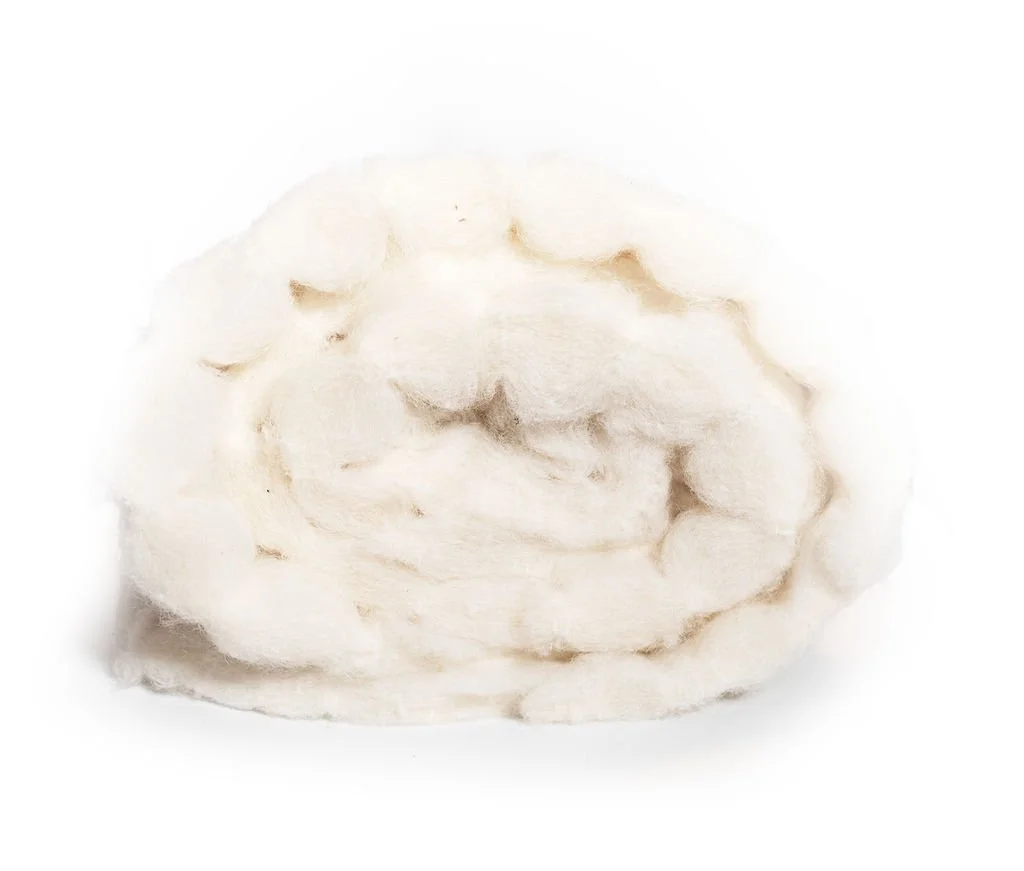Learning Centre
Choose A category
BROWSE ALL Articles
WiseLayer™ Storage Guide
Wool can look like it’s “sweating” in the bag, especially in hot weather. Don’t worry. This guide explains what’s happening (science, not spoilage) and gives you clear, quick rules for storing WiseLayer™ rolls so they stay pristine, dry to the touch and ready to install.
How Wool Makes Ironing Better for Quilters
Quilters need precision when pressing seams. A wool ironing mat offers natural heat reflection, steam absorption, and sustainability that synthetics simply cannot match.
Wool Batting for Quilts: A Mindful Material for Quilters
Quilts hold hours of craft and stories, and they are often passed through generations. Choosing natural, strong wool batting aligns what you make with what matters: fibre that breathes, stays fresher and biodegrades at the end of life.
WiseFill™ Loose Wool Knops: A Natural Alternative for Quilters and Crafters
Crafters and quilters are turning to Wisefill™ loose wool knops as a natural, sustainable alternative to synthetic stuffing. Here’s why it’s changing how makers work with fill.
Wisewool™ Glossary
Welcome to the Wisewool™ Wool Glossary, your quick, no-nonsense guide to wool terms that cuts through industry jargon. From "micron" to "lanolin", these plain-English definitions will help you choose, craft or sell wool with confidence.
The Wisewool™ Supply Chain: tracability from Farm to Final Product
Wisewool™ is powered by fifth-generation family stewards of strong wool at every stage. Discover our meticulous approach from ethical farming, grading and scouring, to processing and product delivery with full traceability and unmatched fibre integrity.
Bedding Makers Review Wisewool™
Bedding makers across the world are choosing Wisewool™ for its mindfully engineered strong wool. Here’s what they say about its comfort, durability and sustainability.
The right v the wrong way to process wool
Wool is naturally breathable, resilient, fire-resistant and biodegradable, but harsh processing can strip it of these strengths, which turns the wool into a synthetic fibre. Discover why retaining wool’s innate properties is crucial for a superior, more sustainable product.
Can Wisewool™ Delivers Contour Like Wool/Poly Blends?
Worried a wool/poly blend will contour better? WiseLayer™ holds its shape with natural loft and resilience, giving you definition without compromise. Read this short article to find out more.
How to care for wisewool™
When incorporating Wisewool™ into bedding, clothing and furniture products, it's essential to follow proper care practices to preserve the wool’s natural performance, comfort, and longevity.
This guide provides clear instructions for manufacturers and consumers using WiseLayer™ and WiseFill™.
Wisewool™ vs Organic Wool: What’s the Difference?
Organic certification isn’t the only way to ensure wool is ethical and natural. Wisewool™ takes a different approach by prioritising fibre performance, sustainability and processing integrity from the ground up.
The secret to Cooler Sleep in warm climates? Wool-Filled Bedding
If you’re tossing and turning in the heat, wool might be the sleep upgrade you didn’t know you needed. Its natural breathability and moisture control make wool-filled bedding a hot climate sleep essential.
How Wool Regulates Body Temperature in Warm Weather
Wool isn’t just for winter. This natural fibre is remarkably effective at regulating body temperature in warm climates, thanks to its breathability, insulating properties and moisture control.
How Well Does Wool Work in Hot Climates?
Wool is often seen as a winter fibre, but its natural breathability, moisture-wicking ability, and temperature regulation make it surprisingly effective in hot climates too. Here's why.
How wool and latex futon mattresses are made
Curious about how wool and latex futon mattresses are made? This guide explains the full process, from material sourcing to final assembly, focusing on sustainability and comfort.
How Long Does Wool Last in a Mattress?
How long does wool actually last inside a mattress? This guide explores the durability of wool fibres—especially strong wool—and how they perform over years of daily use.
Wool vs. Synthetic Materials in Mattress Manufacturing: Key Considerations
Natural materials in mattresses offer comfort, breathability, and peace of mind. Here’s why more people are choosing wool, cotton, and natural latex over synthetics.
How Wisewool Controls Vegetable Matter in Strong Wool
Vegetable matter (VM) naturally occurs in raw wool, but Wisewool™ meticulously controls it to ensure exceptional quality. Learn about our ultra-low VM standards.
Is wool really sustainable?
Wool isn’t just Grandma’s favourite knitting material, —it’s an eco-friendly superstar. Learn how wool benefits the planet, from renewability to biodegradability, while offering unmatched versatility and durability.
What Is Needle-Punched Wool Blanketing? Everything You Need to Know
Needle-punched blanketing is where natural wool becomes engineered performance. Discover what it is, how it’s made, and why strong wool takes it to the next level.







